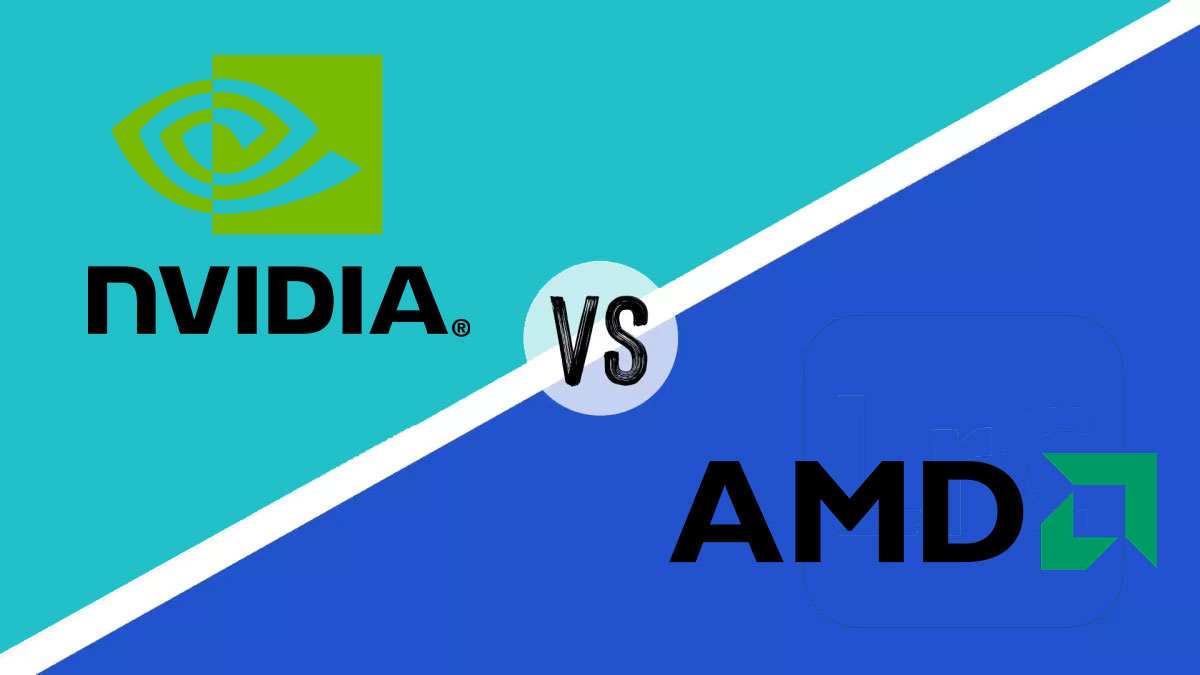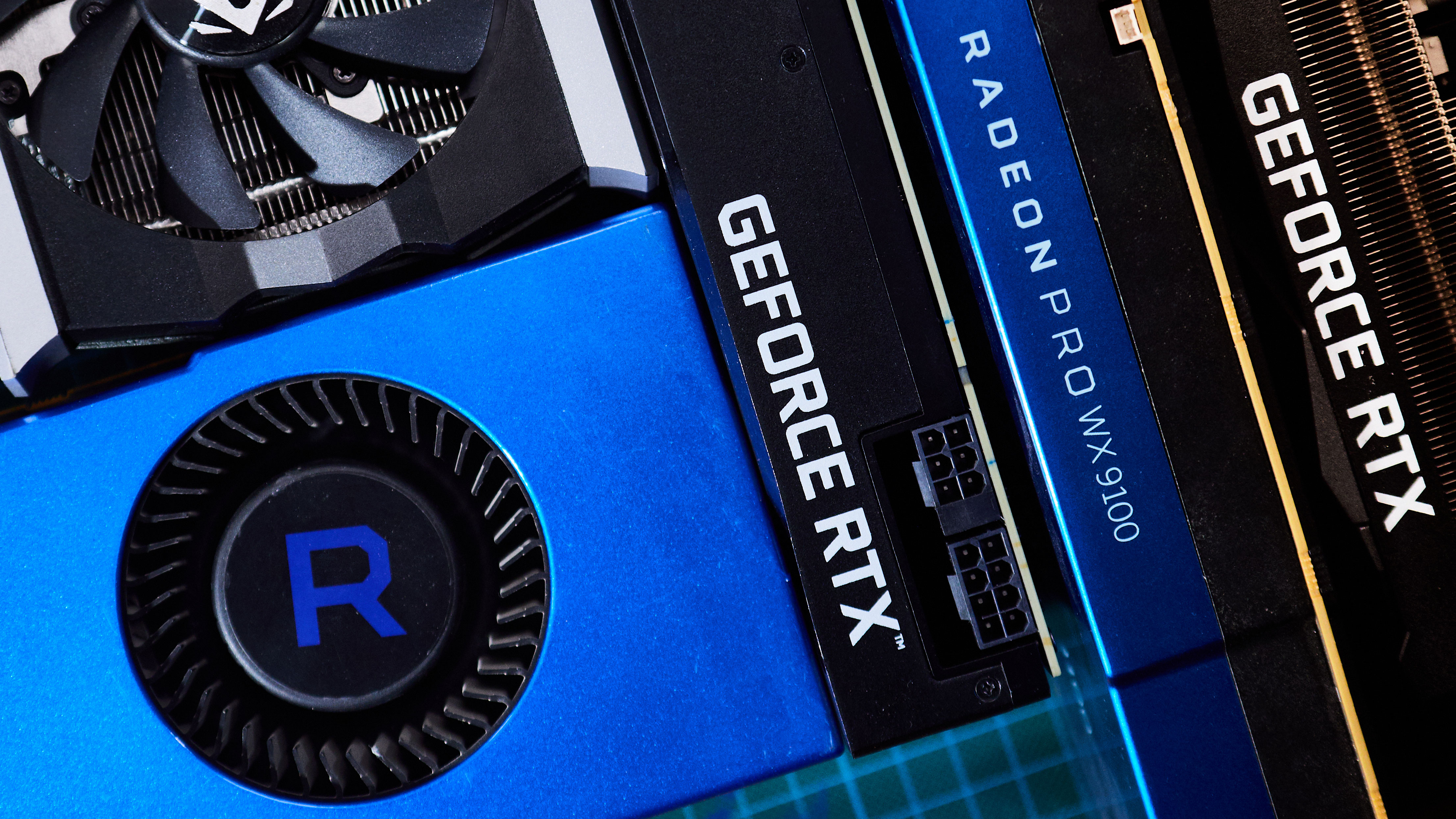
The graphics card conversation is dominated by the AMD vs Nvidia face-off. These two brands have retained a firm grip on almost the entire graphics card market for a long while now, and certainly the past few generations – despite Intel trying to muscle in recently.
The highlights of the AMD vs Nvidia battle, if you will, are usually centered around the cards that are the most powerful, and most highly specced – and, thus, often the most expensive. But the choice and comparisons do continue right down the spectrum into the budget graphics card zone. This was particularly present in the last generation of cards – which are still available, to a point, and should continue in this gen too. Though we may have to look to the rest of 2023 for those lower-end cards to catch up and be released.
The way the best graphics cards on both sides of the divide are now pitched and the particulars about what they offer means that the choice you face is probably less about the two brands than ever before. It’s more about laser-focusing your personal needs and desires, as well as having what you need a GPU for at the forefront of your search too.
And although Steam surveys and data suggest that Nvidia cards are regularly the most popular among gamers, how does the choice between the brands for a creator, like the best graphics card for video editing, fare? We’ll discuss the broad overview of the face-off in this article, beginning with a quickfire comparison.
AMD vs Nvidia - quick fire points
If you’re looking for a quickfire breakdown of the Nvidia vs AMD matchup then these are some broad brush stroke, and salient points.
AMD graphics cards:
- Offer better value for money
- Generally use less power
- Are better for Linux
- Often offer more VRAM for your money
Nvidia graphics cards:
- Offer the most power and higher levels of performance
- Are way better for ray tracing
- Lead the way on 4K gaming and work
- Have awesome features like DLSS and Framerate Generation
These are broad points, and everything is a little more nuanced than just a list of headline differences. As you’ll see throughout this comparison, keeping in mind your own specific setup and needs is key to finding who the best is for you.
ADM vs Nvidia: Performance

In terms of pure power, getting the highest number of frames per second, and working in the highest resolutions, both Team Green and Team Red present good solutions. The 4K capable cards from Nvidia of the RTX 4080 and 4090 will set you back a whole wodge of cash but are seriously awesome cards, while the RX 7900 XTX and 7900 XT from AMD are also excellent for Ultra HD gaming and work. However, what we will add here is that Nvidia does have the edge in ray-tracing demands - more on that below – so if this is anywhere near the top of your priority list then you may already be leaning towards Team Green.
If you’re working and playing in the traditional ‘sweetspot’ of PC gaming, let’s say, and in a 144op resolution then the mid-range options from both brands are solid. You could get great performance here out of AMD’s RX 6700 series, and this generation’s Nvidia RTX 4070 (and 4070 Ti to an extent) is a brilliant mid-range card. We’d have liked it to be a bit cheaper, offers decent bang for buck value.
For those cards specifically aimed at 1080p, and being budget options, then AMD probably has the edge – it traditionally does at this end of the spectrum. The last generation’s RX 6600 or 6700 series are great here, though Team Green’s RTX 3050 is a fine card too. It’s also worth remembering that Nvidia’s RTX 3060 Ti was probably pound-for-pound the best GPU of the last generation, so if the imminent RTX 4060 Ti – and the 4060 and expected 4050 - can imitate something like the same success, then Nvidia will have a beautiful option, or options, for both 1080p and 1440p.
Both brands also have terrific, specialised cards for creators too. The likes of Nvidia’s Quadro lineup and AMD’s PRO cards are some of the best in the business for those looking to get something without a consumer, gaming focus, but still offering flat-out great power and performance.
AMD vs Nvidia: Features

Cards from both brands continue to offer their own features or particular techs that aim to elevate their GPUs above just offering technical prowess. However, Nvidia, in recent generations, has developed more, and has several very attractive proprietary features.
The headline one is ray-tracing, of course. This is the real-time lighting and shadow effects that Nvidia cards can offer in games and adds a further level of ultra-realism to worlds and footage. Throw in the likes of DLSS and Frame Generation and gamers and creators are incredibly well catered for as those features deploy AI to increase image quality, and frame count, and even alleviate the pressure on CPUs which might be bottleneck games. Other features like Nvidia Broadcast, the Nvenc video encoder, and the GeForce Experience suite mean that Nvidia graphics cards offer far more than just a component with a certain amount of power.
Conversely, AMD’s feature set is ‘smaller’ but still has benefits. Taking on ray tracing, Team Red’s Ray Accelerators and FSR 2.0 (FidelityFX Super Resolution) are geared toward, well, ray tracing, but also improving things at the 4K-end. It offers a solution whereby focusing on lower resolutions but then deploying upscaling to help you get consistent framerates and visual fidelity. AMD cards also offer great video encoding support as well as Noise Suppression features which are good bonuses.
AMD vs Nvidia: Price

Now, this factor has long been viewed as the defining way to look at the AMD vs Nvidia matchup. Generally speaking, AMD has always priced its graphics card lower than the direct Nvidia competitors, so it could be said that AMD is the ‘winner’ here; you simply don’t pay as much for AMD’s graphics cards.
Especially with two great generations to pick cards from nowadays, you can get superb budget AMD offerings for as little as $200-$250. The cards here will be perfect for working and gaming at 1080p and offer reliable performance, and a bunch of modern features too. Nvidia cards generally don’t get to that price category and come more into their own once you go up the spectrum to those in the mid-range - and the cards that are great for 1440p resolutions and decent at 4K. The new ‘lower-level’ 40-series cards like the 4070 are good offerings here, but AMD fills out the choice you have there too with the likes of the RX 6800.
Beyond this, we go into 4K territory and wallet-busting prices. It’s here that the prices of graphics cards, on both sides, can start becoming as much as new PCs or laptops. Nvidia’s RTX 4090 is the most expensive card out there with a price tag north of $1,500, and the RTX 4080 (which is still plenty powerful enough for 4K) is slightly ‘better value’ but still well into the four-figure zone at more than $1,100. AMDs top-end offering means that Team Red wins on affordability overall again - the Radeon RX 7900 XTX has a retail price of just over $1,000.
In terms of value for money, this will again return the decision to what you and your setup or work require. It may well be that Nvidia’s exclusive features and ray-tracing offerings mean that those cards are worth the higher price tags; but it might also be that if you’re after just pure graphical, technical performance on a budget, that AMDs Radeon cards are the ones to go for just to maximize the power-to-price ratio.
AMD vs Nvidia: Which is best?

As you can see, there really is no one clear 'winner' when it comes to AMD vs Nvidia. It’ll be up to you to decide which card manufacturer offers the best solution for your specific needs.
However, in the interest of providing you with some firm, take away advice, our broad sentiments are that if you’re on a budget and looking at something in the middle of the spectrum, AMD is likely to offer the better bet; but if you’re looking at the higher-end cards, for gaming, creative work or anything else then Nvidia is
Returning to a bird’s eye perspective, though: one thing is for sure. As the brands continue to battle it out, this is only good news for us, and the advancements that their cards offer. And with overall levels of performance likely to continue to be as close as ever, then looking to other factors, and crucially your own budget, will help you make the right decision.
Why is Nvidia so expensive compared to AMD?
This is a common question for consumers when looking at the AMD vs Nvidia battle. There are a few working theories on this but nothing hard and fast, or ‘confirmed’. It could be because Nvidia deems its graphics cards superior so warrant a higher price, of course, or that the popularity of its cards helps them demand a higher price tag. AMD also has frontline CPUs that bring in lots of revenue, so perhaps this means the brand can squeeze the profit margins and demands of their GPUs. And it’s also no secret that Nvidia has got a couple of recent prices a little wrong by pitching them higher than consumers and experts thought. It’s pertinent to remember, though, more money doesn’t always mean objectively better - and AMDs ability to offer great value is good news for the graphics card market - and us.
Is Nvidia better than AMD?
This depends on a whole bunch of factors as our article discusses here as there are pros and cons on both sides of the AMD vs Nvidia debate. While the technical gap is closer than ever between the two, other factors like exclusive features (ray tracing, FSR et al), and, ultimately, value play a big part in determining which is ‘better’. And this will almost always be a subjective ‘better’ too; your needs and budget will determine which brand’s cards are best for you.







